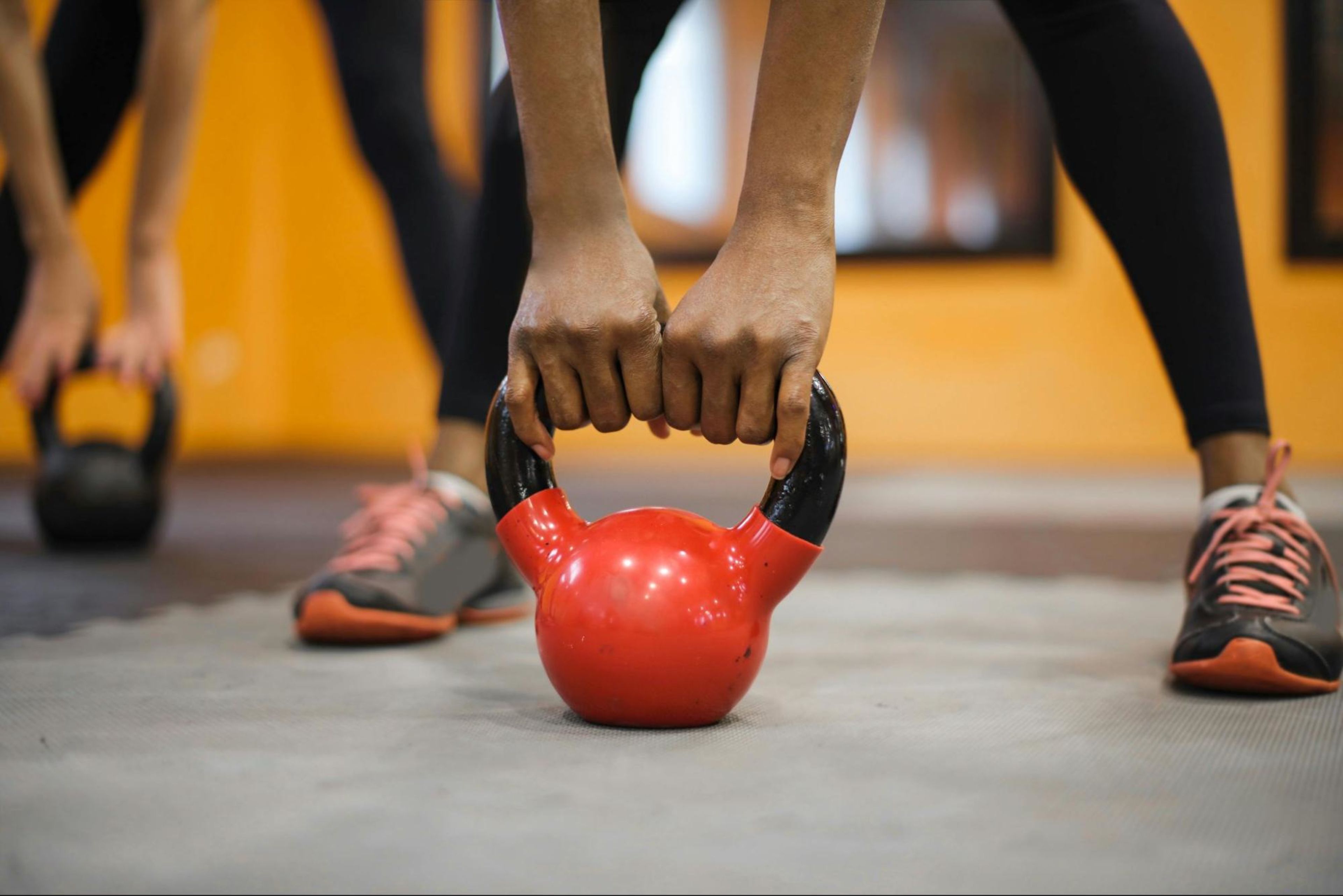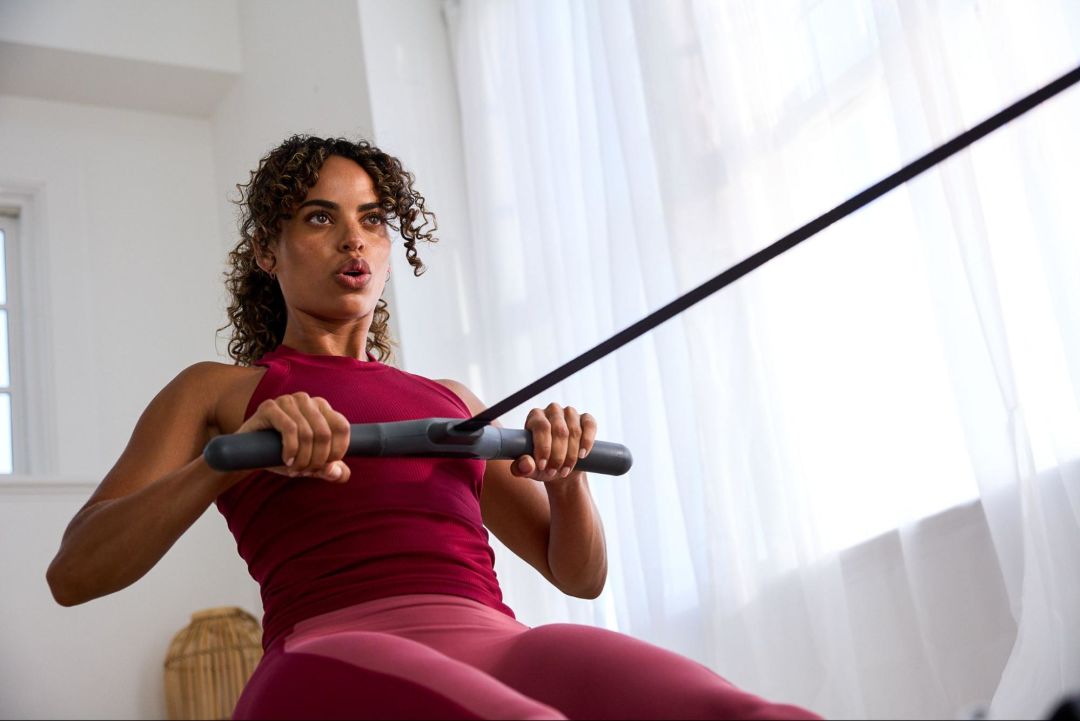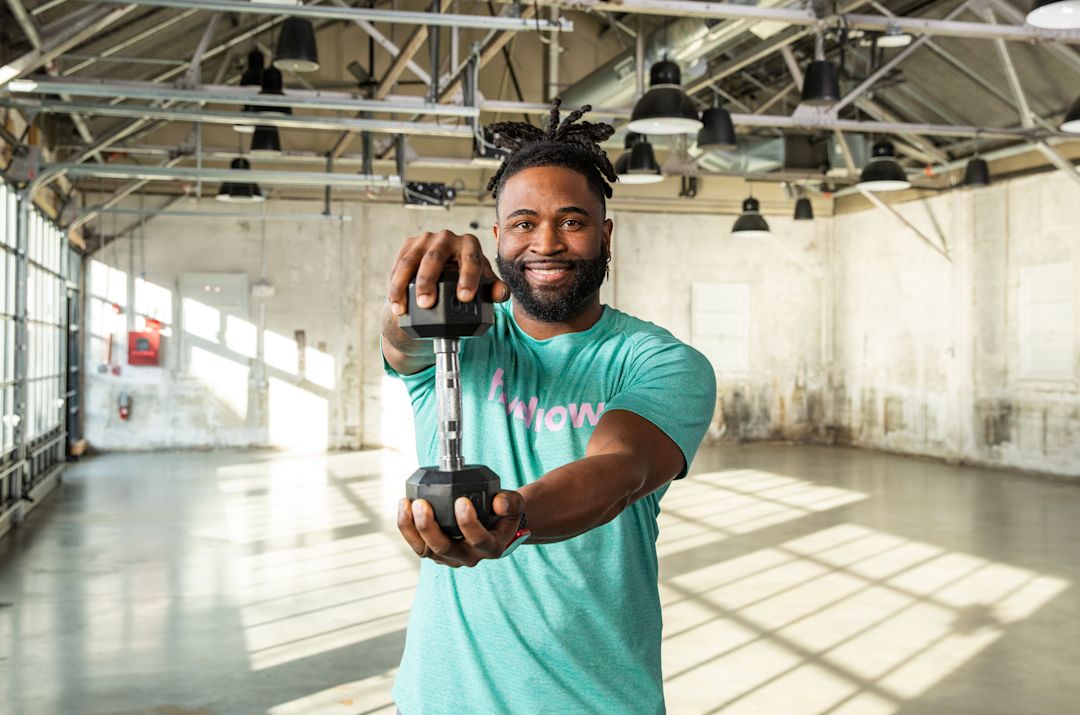The Ultimate Kettlebell Workout Guide: 7 Moves to Build Full-Body Strength

Kettlebells have become a staple in gyms and home workouts alike, loved for their versatility and effectiveness across all fitness levels. Whether you're an athlete or a casual gym-goer, kettlebell training offers unique benefits: it builds unilateral and grip strength, reinforces functional movement patterns, and allows you to build strength and cardio endurance in one session.
In this guide, we’ll break down why kettlebells are such a powerful tool, offer tips for using them safely and effectively, and share some of the best exercises and workouts to get you started.
What are kettlebells, and why are they so effective?
Originating in Russia, kettlebells are simple yet effective tools for building strength. The kettlebell is a type of weight made of cast iron and is shaped like a small bowling ball or cannonball with a curved handle attached on the top. They often have flat bottoms for safety and they sometimes have neoprene coatings on the handles or are color-coded for different weights.
Training with kettlebells is an effective workout because they easily work your whole body. Almost every kettlebell exercise, from foundational moves to more complex sequences, engage multiple muscle groups. The offset nature of the weight due to the handle on a kettlebell makes them a unique challenge for dynamic strength movements.
The benefits of kettlebell workouts
There are many excellent benefits to incorporating kettlebells into your workout routine, including:
1. Total-body engagement
Many kettlebell exercises are full-body movements that engage your shoulders, arms, legs, and core simultaneously. Moves like the swing and Turkish get-up are especially effective, activating nearly every major muscle group in a single motion.
2. Cardio and strength in one
Dynamic movements like the kettlebell swing don’t just build strength—they also elevate your heart rate and challenge your cardiovascular system, delivering a full-body workout in one efficient move.

Explore Hydrow’s library of 5,000+ rowing, circuit training, yoga, Pilates, and mobility workouts.
3. Ultimate workout and space efficiency
Because a single kettlebell can provide both strength and cardio training—depending on the weight and exercise—you can maximize your workout efficiency. Plus, its compact size means you need minimal space for storage at home.
4. Athletic performance enhancement Kettlebells are helpful for sports training
Kettlebell training improves power, agility, and coordination for sport-specific demands.
5. Improved stability and core balance
The dynamic nature of many kettlebell exercises requires you to stabilize your core and helps strengthen your balance.
6. Kettlebells provide a metabolic boost
The intensity of kettlebell circuits can spike your heart rate and metabolism for hours post-workout.
How to choose the right kettlebell weight
Fitness Level | Men | Women |
Beginner | 15–25 lbs | 8–15 lbs |
Intermediate | 25–36 lbs | 15–18 lbs |
Advanced | 36+ lbs | 18+ lbs |
Kettlebells are available in a wide range of weights, typically from 5 pounds up to 100 pounds or more, often listed in both pounds and kilograms. When choosing a starting weight, consider your current fitness level, training goals, and previous strength training experience.
The American Council on Exercise recommends beginners start with 8- to 15-pound kettlebells for women and 15- to 25-pound kettlebells for men. It’s important to learn and practice proper form before adding additional weight. As you build strength and become more skilled at the exercises, practice progressive overload by adding more weight, reps, or sets gradually over time.
Kettlebell training tips and safety essentials
As with all strength training exercises, safety should be a top priority to prevent injury and maximize the effectiveness of the workout.
Start with a lighter weight to focus on mastering proper form and building a solid strength foundation before progressing to heavier kettlebells.
Wear proper gym shoes with closed toes, as a dropped kettlebell can cause serious injury!
A warm-up prior to heavy lifting is essential. The dynamic and often ballistic nature of kettlebell exercises require a thorough warm-up to help prevent injuries. Mobility exercises and foam rolling can activate muscles and loosen up joints, too.
Maintain good posture and form to help prevent injury and strain of the back and other muscles.
Consider using guided workouts led by experts to ensure you are performing kettlebell exercises with proper form and in a safe manner.
Focus on form and fluid movement over speed.
7 kettlebell exercises to maximize your strength
Kettlebells are great for traditional strength exercises, but they also open the door to dynamic movements you won’t find with other equipment. Below are seven versatile exercises that target multiple muscle groups and are perfect for kickstarting your kettlebell training routine:
Kettlebell swing
Goblet squat
Kettlebell deadlift
Kettlebell clean
Kettlebell press
Kettlebell snatch
Turkish get-up
1. Kettlebell swing
This classic kettlebell exercise is a foundational move and one of the most common exercises in kettlebell training. While it looks challenging because of the explosive nature, it’s not difficult to learn. Proper form is essential for safety and injury prevention.
How to do a kettlebell swing:
Stand with feet shoulder-width apart. Hold a kettlebell with both hands hanging down in front of you.
With a slight bend in your knees, hinge at your hips, keeping your core tight and upper body straight from shoulders to hips.
Keeping your arms straight, quickly pull the kettlebell between your legs so your wrists are against your thighs. Explosively push your hips forward and swing the kettlebell out and up in front of you until your arms are about parallel to the floor.
Let the kettlebell swing back between your legs and repeat. The full set of swings should be done as one continuous motion until all reps are completed.

Did you know?
Over 90% of Hydrow members are still active one year later.
2. Kettlebell clean
This exercise is done with the kettlebell in one hand, so you’ll want to make sure you do equal sets on both arms.
How to do a kettlebell clean:
Start with your feet shoulder-width apart and hold the kettlebell with an overhand grip in one hand down in front of your legs. Extend your other arm out to your side to maintain balance and tension.
Keep a slight knee bend with your back straight, and hinge at your hips. Pull the kettlebell between your legs as you hinge.
Push your hips forward as in the kettlebell swing, and as you begin to stand tall, rotate your hand to allow the kettlebell to move around your wrist and rack against the back of your wrist and forearm. Your wrist and forearm should be vertical, with your elbow under the kettlebell and tucked against your body.
Reverse the movement and continue with the repetitions.
3. Turkish get-up
A Turkish get-up looks complicated but it can be broken down into very specific steps. Not only will it build strength, but it also challenges your mobility and coordination. We recommend using a lighter weight for this move, especially if you’re a beginner.
How to do a Turkish get-up:
Lie on your back with a kettlebell in one hand extended above your shoulder. Your other arm should be out to your side on the floor.
Bend your knee on the same side the kettlebell is on and place your foot flat on the floor.
While pressing the kettlebell toward the ceiling, push up with your opposite arm and prop yourself on that elbow.
Continue pressing up onto your opposite hand and lift your hip off the ground.
Sweep your straight leg under your body and kneel so you’re now in a lunge position still with the kettlebell extended straight up.
Stand up out of the lunge, pause and reverse the steps back into a lying position.
4. Goblet squat
A goblet squat with a kettlebell strengthens your legs and glutes while engaging your core and encouraging proper squat form.
How to do a goblet squat:
Stand with your feet shoulder-width apart or slightly wider. Hold a kettlebell in both hands at the sides of the handle rather than the top, and hold the kettlebell close to your chest with your elbows bent.
Keeping your upper body straight, bend your knees and hinge your hips to squat down parallel or slightly beyond.
Pause, push back to start and repeat.
5. Single-leg deadlift
A single-leg deadlift with a kettlebell targets your hamstrings, glutes, and core while improving balance and stability.
How to do a single-leg deadlift:
Start with feet hip-width apart, holding a kettlebell in one hand on the opposite side of the working leg.
Keeping your body straight and your core engaged, hinge at your hips while simultaneously lifting the non-working leg behind you. Think of the non-working leg as an extension of your body and keep it in a straight line with your back.
Be sure to keep your hips from rotating.
Pause, stand back up and repeat.
Do the same number of sets on each leg.

Efficiency for the win.
Work 86% of your muscles in just 20 minutes of rowing with Hydrow.
6. Ballistic row
The ballistic row exercise has a rhythm to it just like other kettlebell exercises, so go slow at first until you get the hang of it.
How to do a ballistic row:
Stand with feet shoulder-width apart and a kettlebell on the floor between your feet. With a slight knee bend, hinge your hips and keep you back straight and flat.
Grab the kettlebell with one hand and row it up towards your stomach driving your elbow up behind you.
At the top of the movement, let go of the kettlebell so it “floats” for a second before catching it with your other hand.
Control it down to the lowest position, row it back up and repeat.
7. Halo
This exercise works the core and builds shoulder stability.
How to do a halo:
Start in a half kneeling position, like a lunge. Hold the kettlebell close to your chest with the handle pointing down.
Keep your abs and shoulder blades tight.
With both hands on the kettlebell, rotate it around your head, keeping it close to your head and keeping your body from flaring side to side.
Do sets going in both directions.
Kettlebell workout routines for every fitness level
Whether you're just beginning your fitness journey or are an advanced exerciser, anytime you add an exercise into your routine, be sure to master the correct form before increasing the weight. The below sample workouts use some of the above exercises as well as some strength exercises that are commonly done with dumbbells and can be easily adapted for kettlebells.
Example of a beginner-friendly kettlebell workout
Do two sets of 8–12 reps for each exercise. For unilateral exercises, do two sets on each side.
Halos
Goblet squats
Bent-over rows
Kettlebell swings
Example of an intermediate kettlebell workout
Do 2–3 sets of 8–10 reps for each exercise. For unilateral exercises, do the same number of sets on each side.
Halos
Overhead shoulder presses
Kettlebell swings
Single-leg deadlifts
Lunges
Example of an advanced kettlebell workout
Do three sets of 8–10 reps for each exercise. For unilateral exercises, do three sets on each side.
Kettlebell swings
Ballistic rows
Goblet squats
Cleans
Overhead shoulder press
Turkish get-ups
Level up your workout routine with kettlebells
Kettlebells are one of the most efficient tools for building full-body strength, cardiovascular endurance, and functional mobility—without taking up much space. Whether you’re training at home or in the gym, incorporating these dynamic movements into your routine can elevate your overall fitness.
Looking for more guidance?
Hydrow offers guided strength training workouts for every fitness level, all led by world-class Athletes who coach you through each movement and help you stay consistent. Additionally, our rowing workouts target 86% of your muscles with every stroke, delivering full-body training and real results.
Explore Hydrow’s strength workouts and see how far you can go.

Explore Hydrow's library of strength training workouts.









